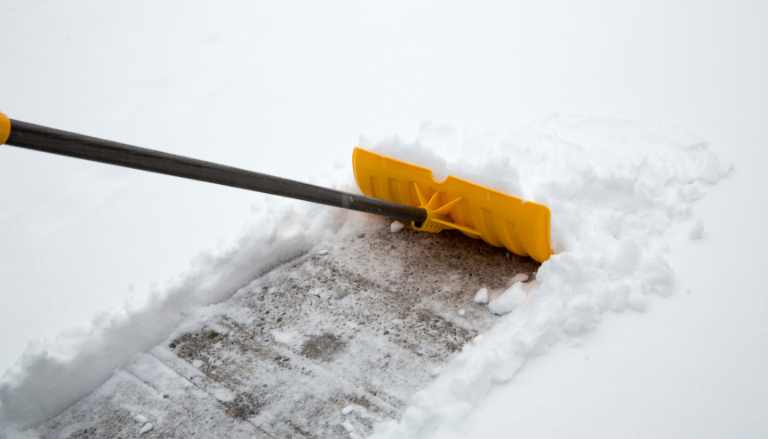While snow and ice look beautiful from inside your warm and cozy home, they can spell big trouble for homeowners if they’re allowed to accumulate. So, if this year’s winter wonderland isn’t exactly wonderful, here are some important tips that can make snow and ice removal easier, and help your home stay trouble-free.
Tip #1: Use the Right Tools…In the Right Way
When it comes to snow removal, homeowners essentially have two choices: Snow shovels or snowblowers. But with so many to choose from, the tricky part is finding the right ones for your weather, your yard, and your back! While there are many variations of snow shovels these days, the majority are powered by the person behind the shovel, so it’s important to choose one that is
comfortable and easy to use. Just as important, however, is how you use your shovel during snow removal.
Here are some tips that should help:
· Warm up your muscles before any shoveling sessions to prevent injuries.
· Use a shovel that allows your head, neck, and spine to stay aligned as much as possible.
· Push the snow instead of lifting it and avoid excessive twisting.
· Move snow in smaller loads instead of heavy shovelfuls.
· Take as many breaks as you need – shoveling snow is a workout!
If you’d rather skip all the shoveling, getting a snowblower may be a better choice.
Tip #2: Move Snow Away from the Foundation
Snow that accumulates next to your home can lead to frozen pipes, or worse yet, cause cracks and leaks to develop and cause major damage to your home’s foundation. During snow removal, do your best to move any snow around your home away from the foundation to avoid these issues.
Tip #3: Choose the Right Ice Melt or De-Icing Agent
Rock salt is often the tried-and-true method of snow and ice removal for homeowners. But did you know it can do serious damage to your concrete and asphalt, not to mention any plants that are exposed? If you want to explore other options, here are a few of the top de-icing agents that offer different approaches and results:
· Calcium Chloride: Most effective at lower temperatures, it is one of the fastest ice melts around, and one of the least expensive – plus it is safe to use on concrete.
· Liquid Sodium Chloride: Uses much less salt, making it better for the environment, and is less expensive than rock salt. Best if used a few hours before snowfall because it prevents snow from sticking, but also works great for snow and ice removal.
· Magnesium Chloride: Works slower than other ice-melting products, but it’s also less corrosive to concrete and asphalt than those mentioned above.
· Sodium Acetate: One of the more environmentally friendly options, this de-icing agent lasts longer than other ice melts, though it’s usually more expensive.
· Sodium Chloride (Rock Salt): This highly popular and least expensive option is less effective at extremely low temperatures, corrosive on metals and concrete, and could kill your plants if allowed to accumulate. However, it does the job if you’re in a pinch!
· Potassium Chloride and Urea: These de-icing agents work fairly well in higher temperatures (25 degrees and above) but with so many cheaper and better options available, you may be better off choosing one of the above for your home.

